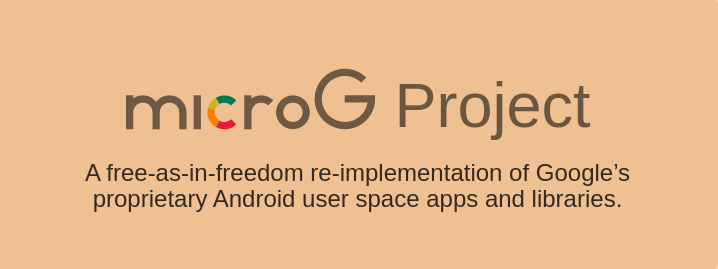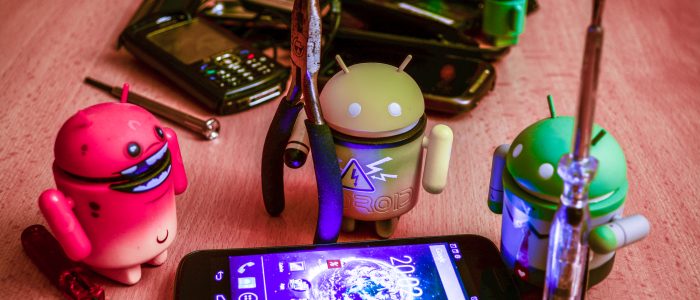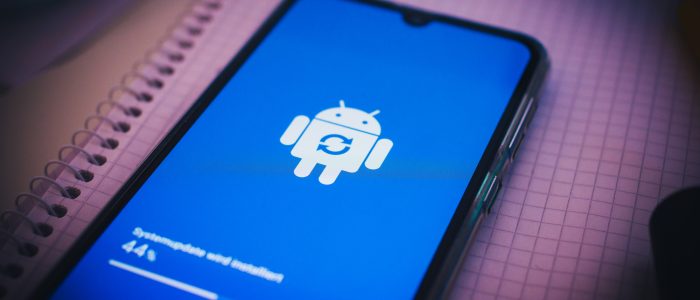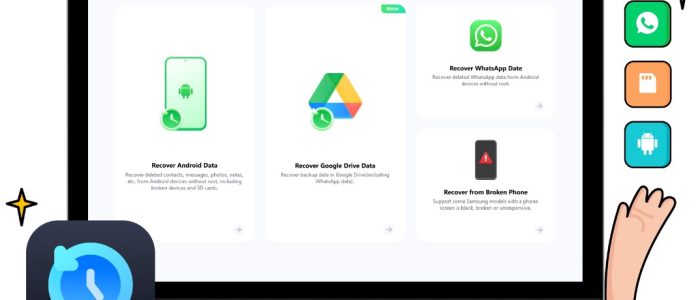What exactly is microG? How does it work and why was it created? Android without Google - an interview with the developer.
microG is a term that many of us have probably heard at some point. At least, if you have ever considered using your mobile phone without setting up Google, you will certainly stumble upon the term „microG“ sooner or later. What exactly microG is, how it works and why it was created, we want to find out together with you in this article and in the upcoming interview with its „creator“.

The microG Project
The Linux-based open source operating system Android is not only the most popular mobile operating system in the world. Unfortunately, it is also well on the way to becoming a proprietary operating system. How is that possible?
Although the core operating system of Android is still released as part of the Android open source project, but the majority of core applications are unfortunately no longer open source. But it gets even worse. More and more libraries and APIs are only available on mobile phones with various Google apps or services preinstalled. This effectively blocks third-party apps from the Google ecosystem. For these reasons Android is also described as a kind of „look but don’t touch“ that is actually open source.
Currently, many popular open source applications already require the installation of some proprietary Google libraries. The growing demand in the free software community, in addition to the serious problems with Google’s proprietary software, has led to the development of a free software clone of Google’s proprietary core libraries and applications. The microG project was born.
Battery life and privacy improvements
There are many good reasons for us to install microG. More and more often we hear lately how important data protection is. Especially Google is currently the biggest data collector known to us. Hardly a day goes by without us reading somewhere again what gigantic amounts of data this internet giant collects about us and of course also knows how to cleverly commercialize it. microG helps us to greatly reduce and also monitor our data sent to Google. So we control which data we want to give away and not Google.
But privacy is not the only reason why you should take a closer look at microG. Especially many older androids get a better battery life thanks to microG. But microG can not only be used on real devices. You can also use microG as „Google tools“ in test emulators and even in virtual mobile infrastructures.
The most important microG components briefly explained
microG is based on a total of five components:
Service Core: (GmsCore) is a „library application“ that provides the necessary functionality to run applications that use or require Google Play Services or Google Maps Android API (v2).
Services Framework Proxy: (GsfProxy) is a small utility that allows applications developed for Google Cloud to Device Messaging (C2DM) to use the compatible Google Cloud Messaging Service included in GmsCore.
Unified Network Location Provider: (UnifiedNlp) is a library that provides Wi-Fi and Cell Tower-based geolocation for applications using Google’s network location providers. It is included in GmsCore, but can also run independently on most Android systems.
Maps API: (mapsv1) is a system library that offers the same functionality as the now obsolete Google Maps API (v1).
Store: (Phonesky) is a so-called „front-end application“. It is designed to provide access to the Google Play Store to download and update applications. The development is in an early stage and there is no usable application yet. (At this point we recommend using the Aurora App Store)
And how do I install microG? – Can anyone do it?
Unfortunately it is not quite that simple. First we should try to find out if we can open the boot loader on our device. Then it would be advisable to check if there is already a Lineage OS version with microG for our device. Lineage OS is a very slim and user-friendly Android operating system. A beautiful and very detailed guide on how to install Lineage OS on your device can be found at Kuketz. In his blog he describes step by step how to install Lineage OS on your Android with a little patience. Even if you really want to completely renounce Google and its market dominance, you should definitely take a look at the series of articles „Android without Google: Take back control!“ by Mike Kuketz. The links to his blog at a glance:
- Android ohne Google: Take back control! Teil1
- LineageOS – Take back control! Teil2
- Magisk: Bei der Macht von Root – Take back control! Teil3
- AFWall+: Digitaler Türvorsteher – Take back control! Teil4
- F-Droid: Freie und quelloffene Apps – Take back control! Teil5
- AdAway: Werbe- und Trackingblocker – Take back control! Teil6
- Shelter: Big-Brother-Apps isolieren – Take back control! Teil7
- Android-Systemeinstellungen & Google-Fallstricke – Take back control! Teil8
But it can also be that you cannot or do not want to do completely without Google. In this case, the series of articles by Kuketz is a great first aid to understand what it is all about and how to install an alternative operating system on your android. With that important basic knowledge, installing microG is actually a „piece of cake„.
We look forward to your questions.
In our interview with the developer we will of course also go into the installation in detail. If you stdill have questions about the installation after that, or if you still can’t figure it out, you are of course welcome to ask these questions in our Tarnkappe Forum. Together we will surely find a solution.
 We are happy to have the opportunity to get to know this ambitious project and its developer together with our readers. Most of the microG manuals are still in English and there are always questions from users who are stuck or don’t really understand what it’s all about or what possibilities microG offers.
We are happy to have the opportunity to get to know this ambitious project and its developer together with our readers. Most of the microG manuals are still in English and there are always questions from users who are stuck or don’t really understand what it’s all about or what possibilities microG offers.
Here is your opportunity to ask the developer of microG questions. Well, I have one question on my tongue: Who is behind microG?
Please send us your questions to the developer until December 31st. As always, we can’t accept any questions after that date.
Deadline ends on 31th of December!
The German original of this article can be found here.
Picture: microG, thx.
Tarnkappe.info


















